At the YUAG, the Department of Prints and Drawings sketches out an alternative mode of museum-going.
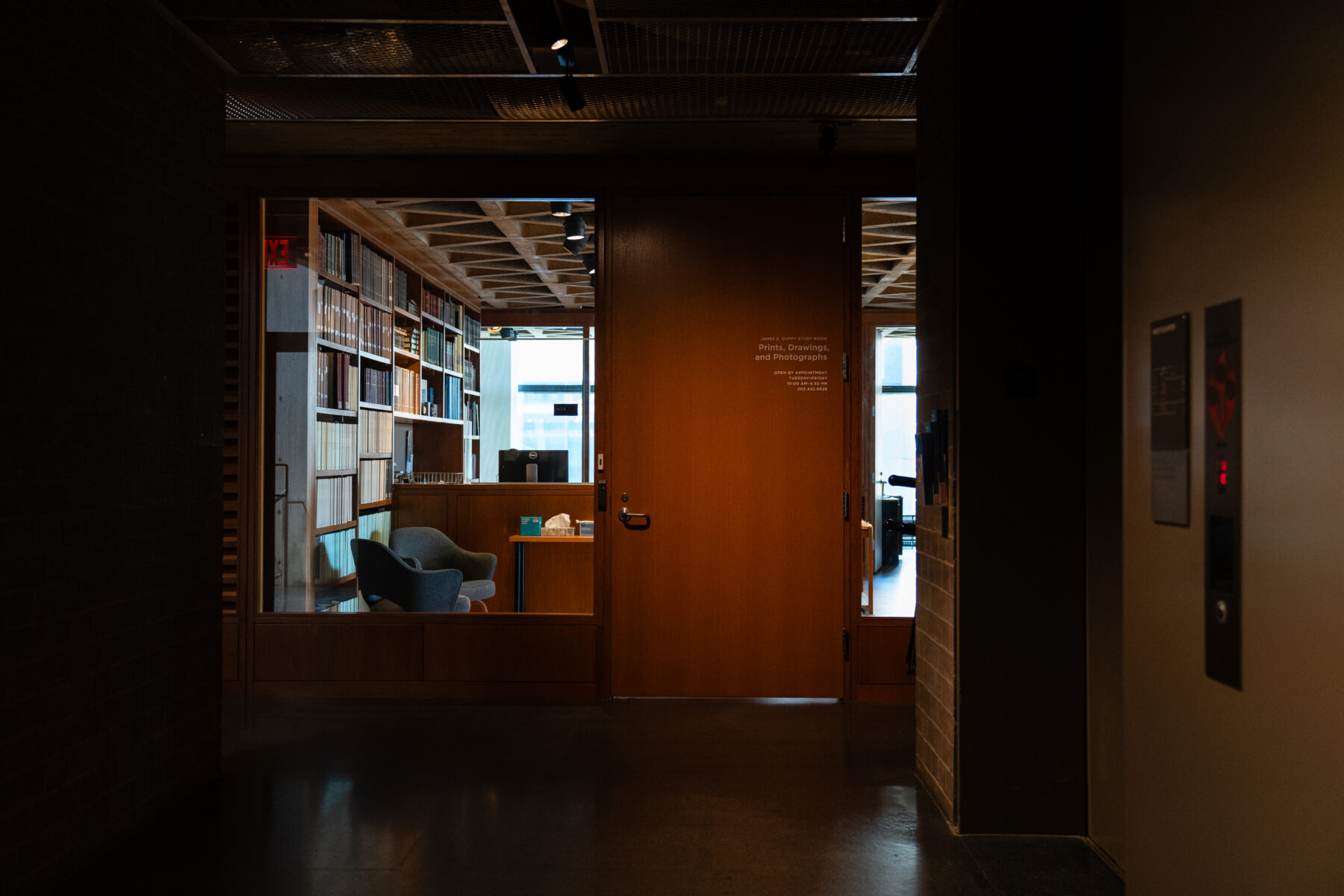
A large wooden door on the fourth floor of the Yale University Art Gallery guards a room that looks off-limits. But small white print on the wood reads, “OPEN BY APPOINTMENT.” Behind lies a collection of more than fifty thousand prints, drawings, and photographs—the hidden treasures of the Department of Prints and Drawings.
Most YUAG curators work outside of the three-building museum, but Prints and Drawings is one of three curatorial departments housed within the Gallery. It operates out of a study room adjacent to its exhibition space on the fourth floor.
Most of the YUAG’s works on paper collection are prints. They are created by etching or carving an image onto a matrix—a template often made of wood or metal. The matrix is inked, and the inked image is transferred onto another surface, often paper or fabric, which becomes the artwork. Because the process is defined by transfer from a template, printmaking facilitates reproducibility. For this reason, prints and drawings curator Freyda Spira told me, works on paper are seen as “democratic media.”
“Because they’re multiple, many copies can be distributed around the world and disseminate knowledge,” curator Lisa Hodermarsky explained.
What happens when works on paper, valued for their accessibility, become tucked away in a museum?
***
On an October afternoon, Freyda Spira, the Robert L. Solley Curator of Prints and Drawings, met me in the lobby of the Yale University Art Gallery. Together, we took the West Elevator to the fourth floor.
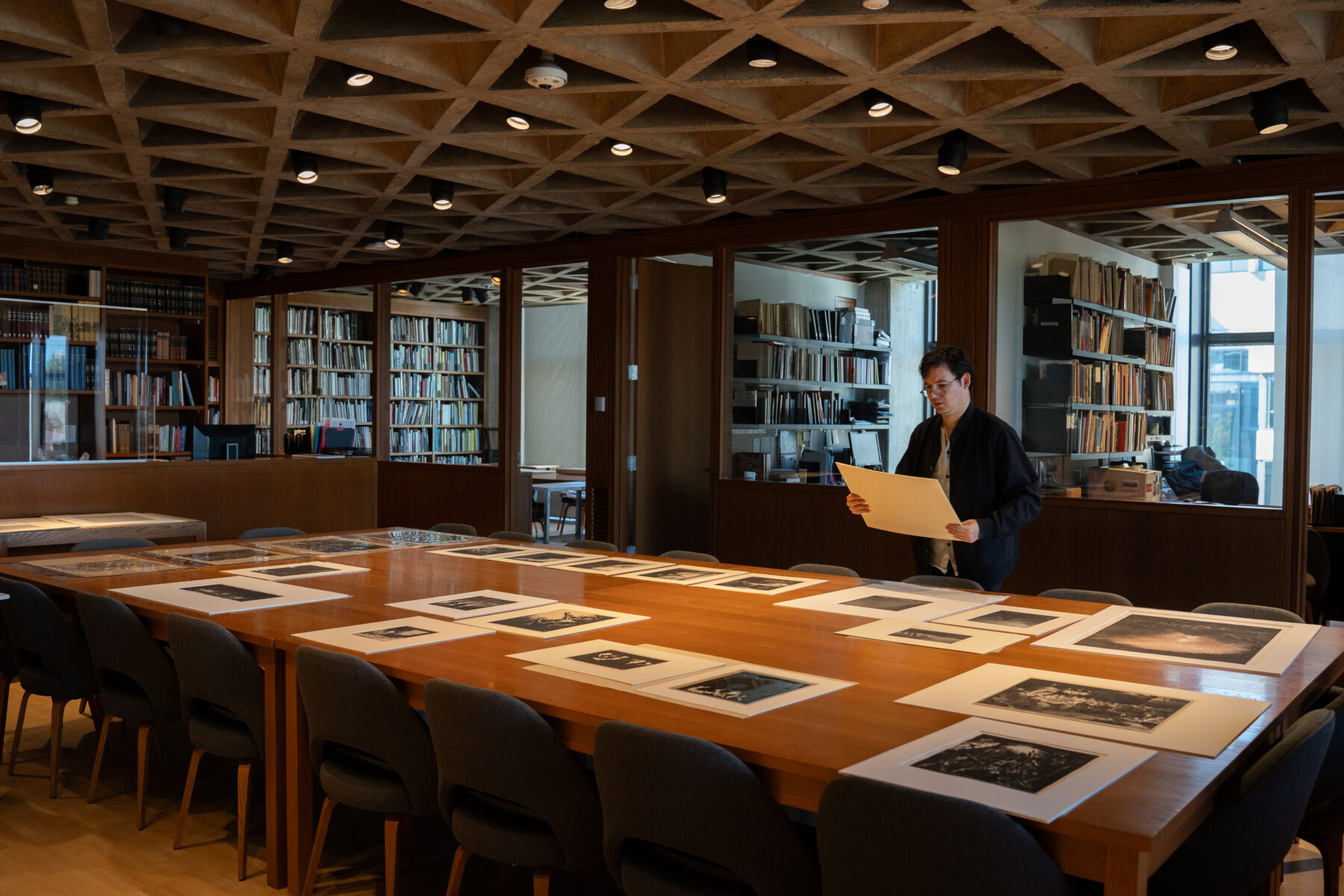
The department was founded in 1927, 95 years after the YUAG. Previously, the museum had been mostly a paintings collection, and according to Hodermarsky, there were only a “small smattering of drawings.” In 1925, the Gallery was gifted 150 prints by Albrecht Dürer and Rembrandt van Rijn, a collection significant enough to start the department and study room.
With Spira, I entered the James E. Duffy Study Room, where a large wooden table stood at the center. Natural light flooded in through the floor-to-ceiling windows, illuminating the prints lined neatly along the table’s perimeter. Towards the back of the room, offices with big glass windows provided a glimpse of the curators behind the scenes. I saw Lisa Hodermarsky, the Sutphin Family Curator of Prints and Drawings, focused at her desk, but as soon as I came into the room, she greeted me brightly. “I like your sweater,” she said. “Very collegiate!”
As the two curators showed me through the different spaces, they seamlessly bounced sentences back and forth between each other.
Spira started: “This is where we do….”
“The magic here!” Hodermarsky finished.
The curators opened several cabinets and drawers, sharing fun facts about each piece. Works on paper can stand alone as complete works, but the collection also includes many preparatory works of paintings displayed in the Gallery. For Hodermarsky, seeing the artist’s process is the exciting part. In the late 19th century, she explained, the artist of a mural would often do the preparatory sketch, but the painting was usually done by assistants. “The preparatory works are what have the artist’s hand,” Hodermarsky said.
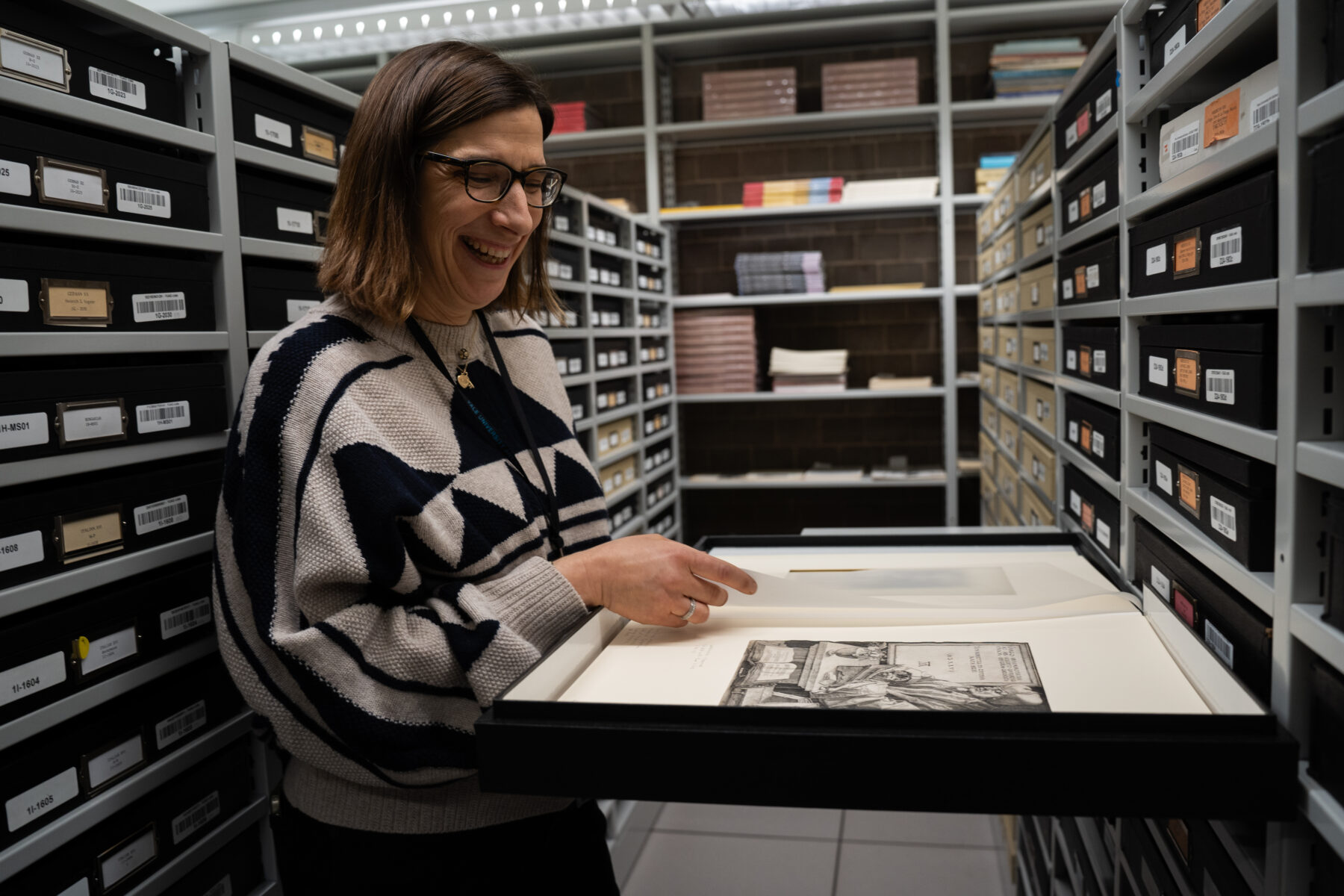
Classes often visit the study room, where students can experience an alternative mode of museum-going. Yale English lecturer Margaret Spillane, who teaches “Writing about Contemporary Figurative Art,” brings her students here twice a semester. Students, Spillane said, are often surprised by the intimacy of experiencing the art at such proximity.
“There’s no glass, there’s no frame,” she said. “It’s a completely different experience when there’s nothing mediating the space between you and the work.”
Through the study room, works on paper are accessible to students in a way that off-site paintings and sculptures are not. Yet Joseph Henry, a fellow in the Prints and Drawings department who facilitates class visits, noted that the radical reproducibility and traversability of prints is perhaps oversold. “They’re not virtual documents that travel,” he told me, as he handled the prints. “They have a real materiality to them.” To be viewed by a visitor, each work must be individually unearthed from storage and monitored by the staff.
The department has long serviced visitors through their study room, but it was only in 2022 that the department received a dedicated gallery space. YUAG Chief Curator Laurence Kanter said that the Gallery had always wanted one for the Prints and Drawings department, and the COVID-19 pandemic provided the opportunity to convert part of the temporary exhibition spaces for prints, drawings, and photography rotations.
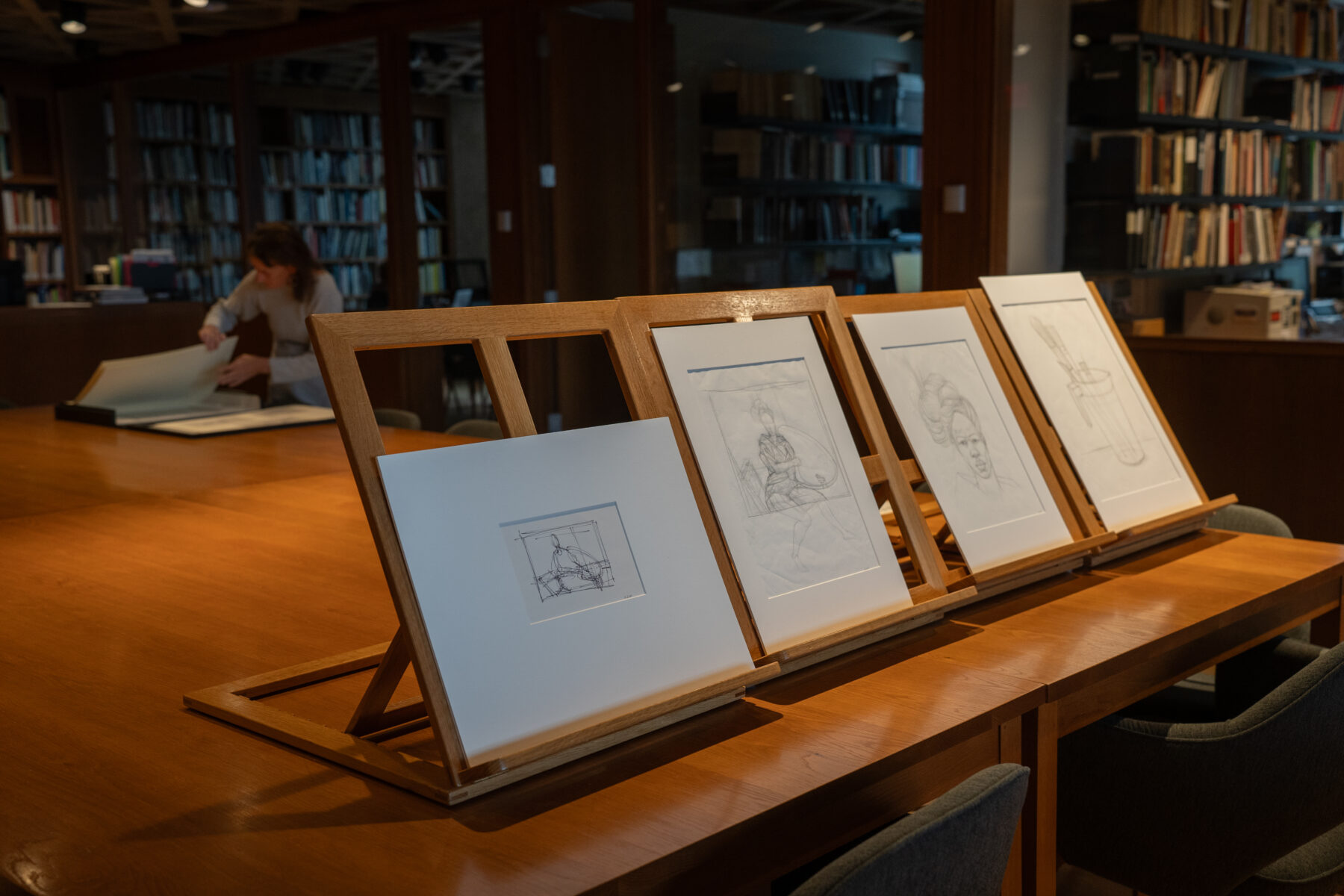
Yet the department still cannot display a permanent installation. Because light exposure may cause fading and color shift in paper, the prints and drawings gallery is changed out every six months. Compared to curators at other departments, who host mostly permanent installations or special exhibitions planned several years in advance, curators in the Prints and Drawings department put together rotations at a tempo Henry describes as “a little aggressive.” Curating rotations, along with servicing visitors in their study room, keeps the small department busy.
With a diversity of visitors and interests to accommodate, different works cycle in and out of storage. Sometimes, the selections provide unexpected inspiration for rotations: earlier this fall, two Dante portfolios were pulled for an Italian literature course. The curators are now considering the portfolios for a future rotation about light and darkness.
Spira says that class selections are just one example of the many “rabbit holes” through which Spira and Hodermarsky find inspiration. Spira said the collection is like a library, to which Hodermarsky immediately added: “The book you think you want is not the one you want. It’s the next thing.”
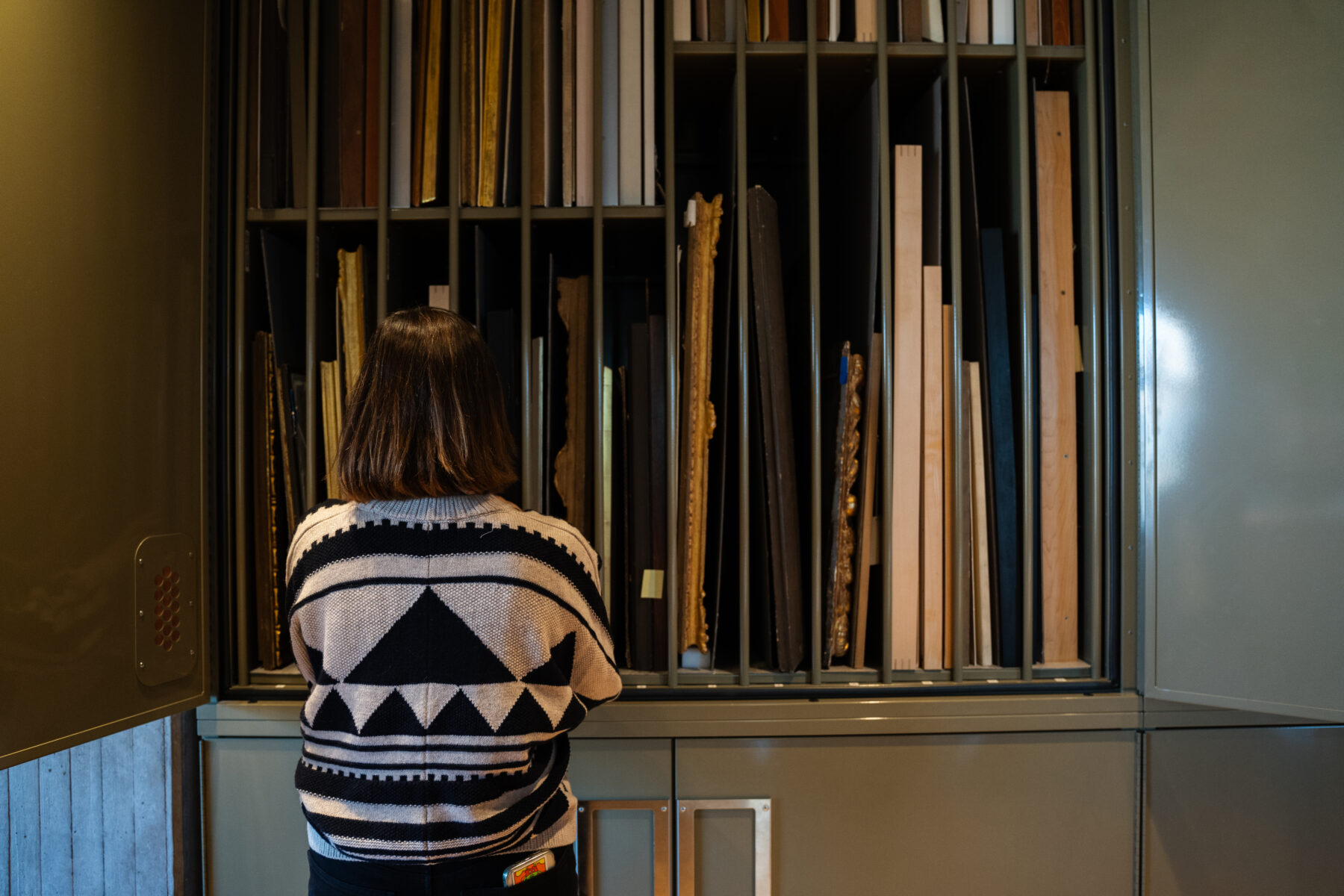
Spira and Hodermarsky might start the curation process by browsing through an online database. But having the collection at their fingertips enables another level of interactivity—the curators can actually pull works out, see how they look in real life, and examine how objects look next to each other on the big table.
“I think we’re like kids in a candy store, and we have a really rich collection, and so it’s hard not to get excited,” Spira said.
When I first visited the small department, I was struck by its quiet hyperactivity. Now I can see that this hyperactivity ensures these works on paper have visibility. And visibility is crucial for works on paper—they were always meant to be seen.
Though these works of art may now be tucked away in a museum, it is the Prints and Drawings staff who keep the spirit of accessibility alive. They facilitate the movement of the thousands of prints and drawings that lie in storage—preventing them from collecting dust, and bringing them to the public. With each rotation, a new set of works takes on renewed life.
What’s on display in the prints and drawings gallery is only a glimpse. Just one wall away, tens of thousands of hidden prints brim with possibility.
— Ellie Park is a junior in Benjamin Franklin College and a Design Editor of The New Journal.

